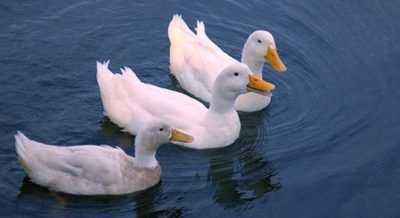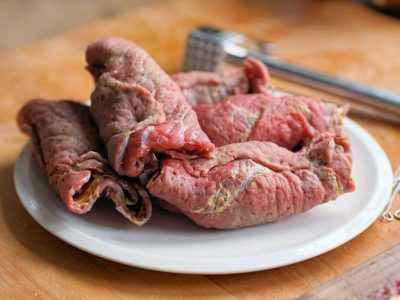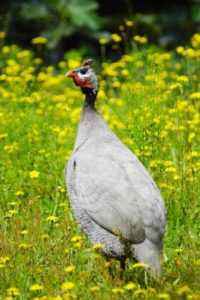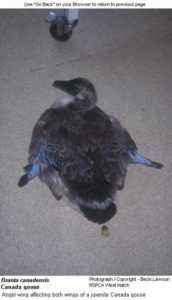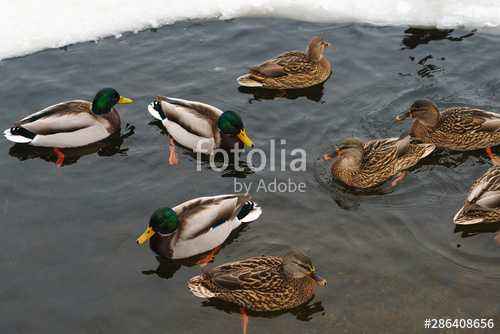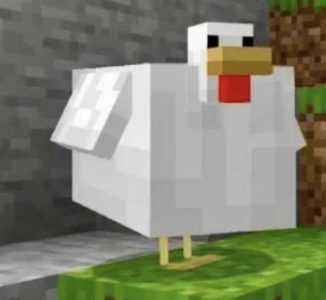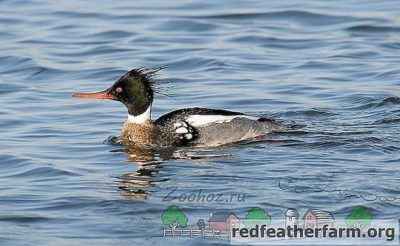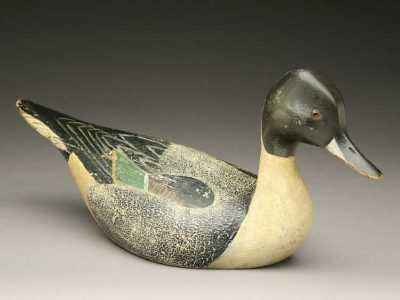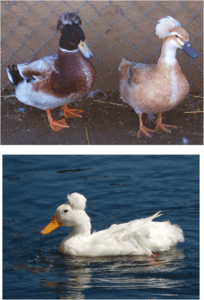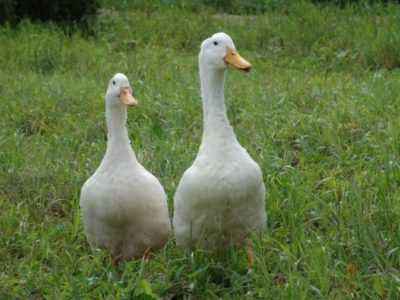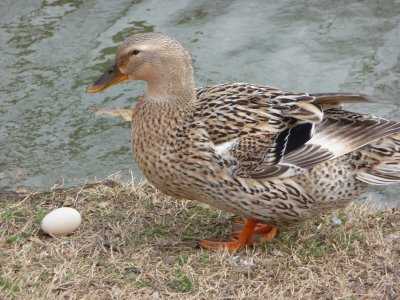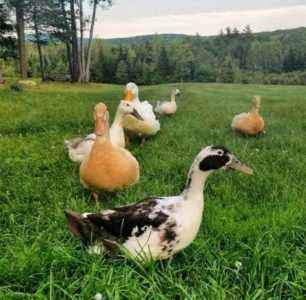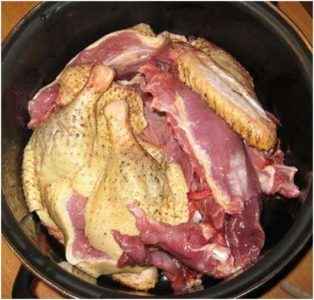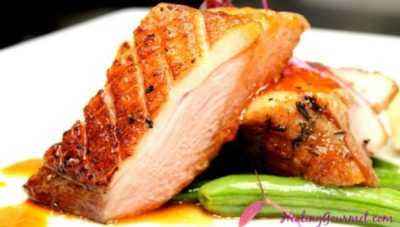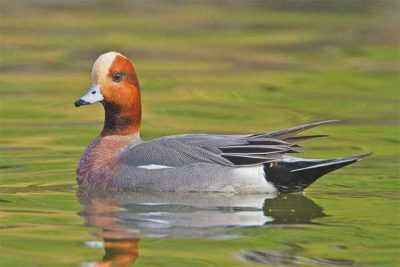Duck Blue Favorite is a cross obtained on the basis of the Bashkir, Beijing and Black white-breasted breeds. The variety was bred in 1998 at the Blagovarsky breeding plant. She got her name because of the beautiful color of the plumage. A quick weight gain, good adaptability, a relatively large number of eggs are able to distinguish an individual. It is suitable for both private households and industrial breeding. The breed received positive reviews from many farmers.
Description of the breed
Ducks of the Blue Favorit breed were accidentally bred during the development of Peking and Bashkir birds. They gained popularity not only because of their meat qualities, but also through the beautiful color of their plumage. Description and characteristics of the appearance of the birds are as follows:- the head is mediocre, closer to the large;
- the beak is elongated, wide and flat;
- the eyes are small;
- the neck is of medium length;
- the body is powerful, with developed muscles, elongated in length ;
- the breast is wide and deep;
- the back is expanded;
- the legs are short and thick.
- Drake weight - 4-5.5 kg, ducks - 3.5-4 kg.
- Ducklings mass at 2 months - 2 , 7-3.6 kg.
- Egg production - 100-150 pieces per year.
- One egg weighs 80-90 g.
Keeping and feeding ducks
The duck Favorite is perfectly adapted to any climatic conditions, therefore its content no problem. Birds can live in a standard barn, without heating. Even in winter, they walk perfectly in the snow, without catching a cold and without freezing their paws. True, the temperature on the street should not be lower than -5 ° C. Maintenance at home on free-range ducks provides for the presence of a reservoir. If there is no river, lake or pond nearby, you can put in the courtyard a small bathroom or pool. If the duck is regularly released into a natural reservoir, it can independently get its own food, then growing becomes more profitable, as it saves money on feeding. When equipping a shed, it is advisable to raise the floor 15-20 cm above the ground. On it lay a bed of straw, peat or dry leaves. Its thickness should be about 30 cm. Change the litter once every few months, it can be used to make compost. It is advisable that the house is well ventilated, but there are no drafts in it. It is best to equip 1-2 windows, make a hole from the south or south-west side. The area of the house is made at the rate of 0.5 m per individual, paddock or aviary - 3 m per adult duck. How to build a house for ducks, you can see in the photo. Feeding Blue Favorites at home is standard.In summer, greens and vegetables predominate in the diet. Ducks can find duckweed, small fish, snails, and mollusks at the pond. At home they are given grains, tops, chopped grass, vegetables (zucchini, pumpkin, carrot). In the winter diet include:- grain (corn, wheat, barley);
- bran from wheat;
- peas;
- dry grass flour, silage;
- prepared feeds;
- meal and oilcake;
- brewer's or fodder yeast;
- waste from the kitchen, vegetables and cleaning.
Breeding of ducklings
Breeding of Blue Favorit ducks at home can cause difficulties. Birds almost completely lost their maternal instinct. This characteristic does not allow breed breed in the usual way. An incubation egg has to be placed under another duck or goose hen, or hatched in the incubator. At the same time, the survival rate of young animals is very high, it does not matter if the ducklings were hatched artificially or naturally. Duck begin to hatch already at the age of 5-6 months.The incubation period of eggs lasts 28-30 days. A very important factor is the correct maintenance of young animals in the first days and weeks.After leaving the eggs, it is necessary to provide the chicks with a temperature of 27-32 ° C and round-the-clock lighting. In the dark, ducklings can transmit each other, and too low a temperature will lead to colds. Starting from the second week, the temperature is gradually reduced until it reaches 18-22 ° C. The daylight hours are reduced daily by an hour. Ducklings should be fed already from the first hours of life. They are given a boiled egg, a fresh cottage cheese. From the second day you can add steamed and finely chopped nettles, then chopped weed, cereals. The amount of protein in the first two weeks should be at least 20% of the total diet, then its content is reduced to 15%, and in adulthood - to 11%. Daily chicks eat every 2-3 hours, in 2 weeks they are fed 5-6 times a day, in three weeks - 4 times, after a month and a half - 2-3 times.
Intensive cultivation and fattening of ducklings allows them to be slaughtered with a weight of about 3 kg already in 2 months. You can hold the bird for longer after waiting for the molting period In this case, the ducks are sent to the slaughter in 120-150 days with a weight of 4-5 kg, sometimes more. The rest of the mass, birds are kept in closed pens, restricting movement.
Diseases of the breed
Duck Blue Favorite is distinguished by good health and disease resistance, which makes its breeding even more popular Proper maintenance and feeding makes growing generally hassle-free. Nevertheless, some diseases can affect the herd. Here is a brief description and description of the symptoms:
- Vitamin deficiency. Most often, there is a deficiency of vitamins A, E, D. With vitamin A, appetite decreases, eyes turn sour, skin dries up, and the feather loses its luster. Vitamin E deficiency is manifested by convulsions, and vitamin D deficiency by rickets. To avoid this, fish oil, sprouted grains, fresh herbs are added to the feed.
- Grade disease.It occurs due to a lack of minerals. Ducks begin to eat sawdust, pebbles, pluck feathers. The state of health is corrected by adding special additives, chalk, shells, ordinary salt, preferably iodized, to the diet.
- Cuticle. Characteristic for ducklings of the first days of life, manifested by diarrhea. For prevention, add potassium permanganate to the water.
- Omphalitis. Inflammation of the umbilical ring in small ducklings. They treat it with antiseptics for treatment.
- Coccidiosis. Infection characteristic of young animals. Manifested by diarrhea, loss of appetite, weight. It is treated with antibiotics; it is possible to add iodine to drinking bowls with water for prevention.
- Tuberculosis. It occurs when the content of ducks is disturbed, the house is too hot, humid, there is no ventilation. The sick duck, and sometimes the whole herd, is disposed of, the place where the bird lived was disinfected.
- Heminolepidosis. Helminthiasis, which causes stool disorders (constipation and diarrhea), cramps. It is treated with anthelmintic drugs.
- Salmonellosis. One of the most common diseases transmitted to people. Manifested by green diarrhea, high fever. Ducks are treated with antibiotics, and if ineffective, they are sent to the slaughter, carcasses are burned. Very often, a duck egg is affected by salmonella.
In order to prevent the occurrence of disease in ducks, it is necessary to identify symptoms in time and adjust nutrition. Prevention of infection are vaccinations, keeping clean.
Advantages and disadvantages of the breed
Blue Favorite breed consistently receives positive reviews. Its maintenance and cultivation are simple, the feed consumption is average. Here is a description of the advantages of these beautiful ducks:
- quick set of ducklings weight;
- good egg production, large egg weighing up to 90 g;
- simple feeding, duck eats almost everything;
- low fat content in meat;
- beautiful appearance.
The main disadvantage of the breed is the lack of maternal instinct, therefore breeding ducklings only possible in an incubator or under another hen. This drawback is compensated by the high survival rate of ducklings, the normal activity of the drake on the fertilization of eggs.
